Lakshadweep Revealed: An Essential Guide for First-Time Visitors
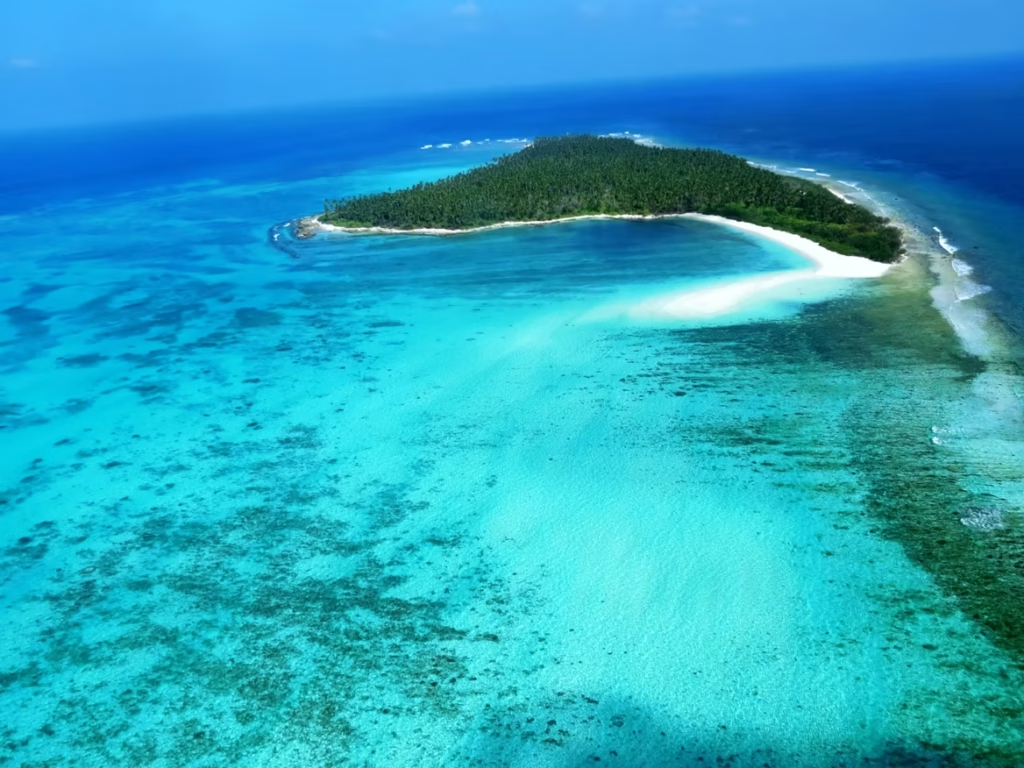
You’ve dreamed about Lakshadweep’s stunning beach screensavers and imagined yourself on those pearl-white shores, where the horizon melts into turquoise waters and time itself seems to pause. The islands have always carried a certain aura of mystery, often compared to faraway paradises like the Maldives, yet uniquely Indian in culture, tradition, and charm. But when it comes to actually planning your first visit, the process can feel overwhelming. Are you looking for a Lakshadweep travel guide? Do you have questions like: Which of the thirty-six islands are open to visitors? How do you get there? What should you pack, and when is the best time to go? And perhaps most importantly, how can you experience the islands authentically while also respecting their delicate environment and rich heritage? This blog is here to clear away that uncertainty. Think of it as your sacred manual, a Lakshadweep travel guide that not only answers these questions but also reveals the secrets that will make your inaugural Lakshadweep journey truly heavenly. From the cultural heart of Kavaratti to the tranquil shores of Kadmat, from Minicoy’s cultural blend to Bangaram’s postcard-perfect beaches, we’ll walk you through everything you need to know. By the time you finish reading, you’ll not only be ready to plan your trip with confidence, but you’ll also feel more connected to the soul of these islands long before you set foot on their sands. Lakshadweep Islands The Sanctuaries: Where Heaven Meets Earth Your Lakshadweep journey usually starts at Kavaratti, the main island, and the perfect place to get a real feel of the islands. Think of it as your warm welcome into this paradise. The local markets are buzzing with life, and you’ll see stalls stacked with coconuts, fresh seafood, and handmade crafts. It’s the best way to taste and feel how the locals live. If you want a sneak peek into what waits underwater, the Marine Aquarium is a must. You’ll spot bright, colorful fish, corals, and even sea creatures you’ve probably only seen on TV. The Ujra Mosque, with its peaceful vibe and beautiful old wooden design, is another stop that shows the island’s culture and history. But the real magic of Kavaratti is in the water. The lagoons here are calm, clear, and perfect for your first snorkeling or diving experience. Whether you’re just floating near the shore or going deeper with a dive instructor, you’ll see coral gardens and marine life that look straight out of a documentary. Imagine swimming with schools of neon fish or spotting a sea turtle gliding right past you; it’s a memory you won’t forget. Kavaratti sets the tone for your Lakshadweep trip. It’s fun, it’s beautiful, and it gives you just the right mix of local culture and island adventure. Kavaratti Islands, Sources: Incredible India Kadmat – The Calm Escape Kadmat is where you go when you just want peace. With long sandy beaches, crystal-clear lagoons, and zero crowds, it feels like your own private island. Days here are slow, perfect for sunbathing, swimming, or just lying back and doing nothing. The highlight? At night, the water sometimes glows with bioluminescence, tiny organisms that make the waves sparkle blue. It’s like nature’s own light show, and it’s pure magic. If you’re up for more, Kadmat also has snorkeling, diving, and kayaking. But honestly, the best thing to do here is relax and let the island’s calm vibes recharge you. Kadmat Island Minicoy – The Culture Mix Minicoy is the island where cultures meet. It feels a little different from the rest of Lakshadweep because it’s heavily influenced by the Maldives, and that’s what makes it so unique. Here you can climb the old lighthouse for insane sea views, watch the famous Lava dance performed by locals, and walk through fishing villages to see traditional island life up close. Of course, the reefs around Minicoy are a diver’s dream colorful corals, tropical fish, and crystal-clear water. And when it comes to food, the seafood here is as fresh as it gets. Minicoy is all about culture, color, and coral, perfect for travelers who want more than just beaches. Minicoy Island, Source: Medium Divine Cuisine: Savoring The Sacred Flavors Food in Lakshadweep is all about freshness. Most of what you eat here comes straight from the sea and is paired with coconuts, rice, and simple island spices. The result? Dishes that are bold, flavorful, and feel like they’ve been made just for you after a day in the sun and sand. Here are some dishes you can’t miss on your trip: Mas Riha – A traditional coconut-based fish curry that’s rich, creamy, and full of flavor. Every family has their own version, but no matter where you try it, you’ll remember it. Tuna Masala – Tuna is one of the island’s staples, and when it’s cooked with fiery spices and coconut oil, it turns into the ultimate comfort dish. Best enjoyed with rice or flatbread. Akra – Think of these as the island’s version of pakoras. Deep-fried fritters made with fish or veggies, crispy on the outside and soft inside. Perfect as a quick snack, especially with a cup of hot tea at sunset. Octopus Fry – For the more adventurous eater, this dish is bold and spicy, with flavors you won’t forget anytime soon. Coconut Shake – When the sun gets too hot, nothing beats a cold coconut shake. It’s refreshing, hydrating, and you’ll probably end up having more than one a day. What makes Lakshadweep’s food special is how connected it is to the islands themselves. Everything is local, caught in the ocean, picked from coconut trees, or grown in small island gardens. Eating here isn’t just about filling your stomach; it’s about experiencing the culture through flavors. Even a simple meal feels authentic, homely, and satisfying. Don’t worry we are listing everything for your in this Lakshadweep travel guide! If you’re a foodie, Lakshadweep is heaven. And even if you’re not, the freshness of the dishes, the simplicity
Lakshadweep: A Tropical Haven
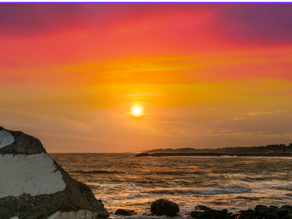
Imagine what the world would be like without turquoise waters shimmering in the heat, white sandy beaches stretching for miles, and leaf-like coral reefs teeming with marine life. Where the music of the sea is the music of the gentleman, and all sunrisings are newborn days. Lakshadweep is a little-known paradise in India and one of the most beautiful tropical archipelagos in the world. The cluster of 36 small islands, located in the Arabian Sea, is a paradise of no less than that. It is quite literally called a hundred thousand islands, though there are not that many, but the beauty here does not have any limits. Throughout this travel guide, we will walk you through all the information you need to know about Lakshadweep, including some of the best places to visit and the exciting activities to do in the water, as well as the best tips to pack, and some of the most common questions. Towards the end, you will be at the point to design the ultimate island escape and understand it is known as Lakshadweep: A Tropical Haven. Lakshadweep Why Visit Lakshadweep? Lakshadweep remains among the purest places of all in India, with an ideal balance of adventure and the serenity every tourist needs. People are coming and going in the other travel spaces but the islands are untouched and less frequented to allow the experience to be exclusive and intimate. Here is the reason why Lakshadweep is on your travel bucket list: Clean Beaches – White sandy beaches with crystal clear waters where people can swim and sunbathe. Thrilling Water Adventures – Snorkeling, scuba diving, kayaking, and others to get an adrenaline rush. Exclusive Marine Life – It contains colored coral and exotic marine life. Peaceful Getaway– a relaxing vacation in the midst of the bustle of city life. Cultural Richness– Find out what the locals in the island communities’ culture and hospitality are like. Island Hopping in Lakshadweep Island hopping is the most suitable way to visit Lakshadweep because the islands have something to offer. These are the best islands that you should not miss: 1. Kavaratti – The Cultural Heart Start at the Lakshadweep capital of Kavaratti. The island is perfect regarding the balance between nature and culture because it is reputed to be serene and has lovely lagoons and stunning landscapes. Best things to do in Kavaratti: Exhibit and visit the local marine biodiversity in the Marine aquarium and museum. Visit Ujra Mosque, which has a special structure and was built centuries ago. You can take long walks on the beaches and have a peaceful sunset. You can also go snorkeling or take a glass-bottom boat ride to see colorful coral reefs. Kavaratti is the best place to have a good time and take in culture at the same time. Kavaratti: The capital of Lakshadweep 2. Agatti – The Adventure Hub Agatti Island is the heaven of adrenaline junkies. Most visitors enter through it because it is the only airstrip in Lakshadweep. Why visit Agatti: Considered to have exciting water sports activities such as scuba diving, jet skiing, kayaking, and windsurfing. It also has the most colorful coral reefs in India, which provide one of the best snorkeling experiences. Perfectly suited to less practiced and more expert divers. Crystal-clear lagoons in Agatti have transformed the island into the best spot to explore the underwater world. Agatti: Water Sports Hub 3. Kadmat – The Peaceful Retreat Kadmat Island is the paradise of any traveler who wants to be alone and feels more relaxed. It has a more intimate and romantic feel with the long sandy beaches and insanely breathtaking coral reefs. Top activities in Kadmat: Rest in a hammock as you tan. Play beach volleyball, swim, or walk along the beach. Kadmat is the perfect place to be when one wants to relax during a honeymoon or as a couple. Kadmat Beach 4. Bangaram – The Hidden Gem Bangaram is an untouched island, thus regarded as one of the most exclusive places to visit. It has blue waters and pure, untouched beaches that make it ideal for photography lovers and nature enthusiasts. Why Bangaram is special: Isolated, serene, and impossibly beautiful. Good deep-sea fishing area as well as a diving area. An amorous outing without people. Things to Do in Lakshadweep: A Tropical Haven There is more to Lakshadweep than lying on the beach (but that is also a good choice). Some of the activities that one must not leave out are as follows: Snorkeling and Scuba Diving Discover the sea life at Lakshadweep. The experience here is comparable to the most exotic fish species in the world due to its colorful coral reefs and exotic fish species. Kayaking and Canoeing Cruise along smooth lagoons and mangroves, and coral reefs. It is calm and suitable for novice and advanced paddlers. Glass-Bottom Boat Rides A boat ride on top of the glass bottom is the perfect day for viewing the sea inhabitants without getting wet if you are not prepared to dive. Cultural Exploration Explore the quaint villages in the country, mingle with the hospitable natives in the islands, and learn about the country’s products and foods of Lakshadweep. Picnics and leisure on the beach. In some cases, there is no better plan than no plan. Take a book, drink fresh coconut water, and relax. Best Time to Visit Lakshadweep The climate on the islands is tropical throughout the year, although the best months to travel are between October and March. During this period: It is a good summer with great weather. The open ocean is the water, and therefore, the water sports are quite safe and enjoyable. Snorkeling and diving visibility are at their best. One is advised not to travel during the monsoon season (June to September) when rains and rough seas can spoil the travel plans. Travel Tips for Lakshadweep It takes a little planning to visit Lakshadweep: A Tropical Haven. Here are a few key tips: Get
The Ultimate Family Guide to Lakshadweep: An All-Age Tropical Paradise

Introduction — India’s Very Own Coral Kingdom Imagine a place where the ocean isn’t just blue; it’s a gradient of sapphire, turquoise, and aquamarine, so clear you can count the pebbles on the seabed from a boat. Imagine a vacation where your morning alarm is the sound of gentle waves lapping against the shore, and your “to-do” list consists of building sandcastles, chasing crabs, and floating in warm, shallow lagoons. Welcome to Lakshadweep. Often called “India’s Maldives,” Lakshadweep (meaning “A Hundred Thousand Islands” in Sanskrit) is a string of 36 coral atolls off the coast of Kerala. But beyond its breathtaking beauty, it is arguably the safest, most serene, and most enchanting destination for a family vacation. Whether you are traveling with curious toddlers, adventurous teenagers, or grandparents seeking tranquility, this archipelago offers a rhythm that suits everyone. This guide is your roadmap to navigating this remote paradise. We will explore safe swimming spots for kids, cultural excursions for the history buffs, logistical tips on permits (crucial for this region), and how to create an itinerary that spans generations. With the immersive, hassle-free planning provided by The Tarzan Way, you can navigate the unique logistics of these islands with ease, ensuring your family getaway is as smooth as the lagoon waters. Key Takeaways Safety First: Lakshadweep is famous for its shallow, calm lagoons, making it one of the safest beach destinations for children and non-swimmers. The Big Three: The most family-friendly islands are Agatti (gateway), Bangaram (uninhabited luxury), and Kavaratti (culture and glass-bottom boats). All-Age Activities: From glass-bottom boat rides for seniors to scuba diving for teens, there is something for every energy level. Cultural Immersion: Discover the unique “Mahal” culture of Minicoy and the rich maritime history of the islands. Logistics are Key: Unlike Goa or Kerala, you need a government permit to enter Lakshadweep. Planning 2-3 months in advance is essential. Digital Detox: Connectivity is limited. Use this as an opportunity for genuine family bonding without screens. 1. Why Choose Lakshadweep for a Family Vacation? Credit: Unsplash Choosing a vacation spot that pleases everyone—from the 6-year-old to the 60-year-old—is a challenge. Lakshadweep solves this effortlessly. The Lagoon Advantage: Unlike mainland beaches with rough waves and strong currents, the islands of Lakshadweep are surrounded by coral reefs that create large, shallow lagoons. These act as natural swimming pools—calm, warm, and safe for children and seniors. Zero Crime Rate: The islands are incredibly safe. The local community is warm and welcoming, allowing families to explore with total peace of mind. Pollution-Free: There is no smog, no traffic jams, and no noise pollution. It is a pristine environment where your children can breathe the freshest air imaginable. Educational Value: It’s a living biology lesson. Kids can learn about coral ecosystems, marine conservation, and distinct island cultures in real time. 2. Island Hopping: The Best Islands for Families Credit: Unsplash Not all islands are open to tourists, and not all are suitable for families. Here are the top picks for an all-age trip. Agatti Island: The Gateway This is where your flight lands. The airstrip, a thin strip of land surrounded by deep blue ocean, is a spectacle in itself. For Families: It has beautiful resorts right on the beach. It’s perfect for a short stay (1-2 days) to settle in before hopping to other islands. Activity: A simple evening walk along the eastern jetty to watch sea turtles swimming in the clear water. Bangaram Island: The Uninhabited Jewel Bangaram is a teardrop-shaped island that is uninhabited except for the resort staff and tourists. It offers the ultimate private island experience. For Families: Since there is no local village, the entire island is your playground. The beach is accessible right from your cottage. Magic Moment: At night, the phosphorescent plankton washes up on the shore. Walking on the beach feels like walking on stars—a magical experience for kids. Note: This is the only island where alcohol is permitted (for adults). Kavaratti: The Cultural Capital The administrative capital is bustling (by island standards) and offers more sightseeing options. For Families: Visit the Marine Aquarium, which houses sharks, octopuses, and colorful fish—a hit with toddlers. Activity: The glass-bottom boat rides here are the best in the archipelago, allowing non-swimmers to see the coral gardens clearly. Minicoy: The Cultural Outlier Located far south, Minicoy has a culture closer to the Maldives. The locals speak “Mahl” and have unique traditions. For Families: Visit the 300-foot-tall Lighthouse (built by the British in 1885). Climbing to the top offers a panoramic view that will leave the whole family breathless. Activity: Visit a Tuna Canning Factory to see how the island’s main export is processed. 3. All-Age Activities: From Toddlers to Grandparents Credit: Unsplash Lakshadweep is not just about sitting on the sand. It’s about engaging with the ocean at your own pace. For the Little Ones (Ages 3-10) Glass-Bottom Boat Rides: This is the defining activity of Lakshadweep. You sit in a boat with a transparent floor, gliding over coral reefs. Kids can spot “Nemo” (Clownfish) and Dory (Surgeonfish) without getting wet. Shell Hunting: The beaches are littered with beautiful (dead) shells and coral rubble. Note: You can collect them to look at, but strictly cannot take them home as souvenirs. Lagoon Swimming: The water is shallow for hundreds of meters. It’s the perfect place to teach kids how to swim. For the Teens and Adventurous Adults Snorkeling: Kadmat and Bangaram have world-class snorkeling. The reefs are healthy and teeming with life. Scuba Diving: For those over 10 years old, a “Discover Scuba Dive” is a life-changing experience. You might spot sea turtles, rays, and reef sharks. Kayaking: Rent a kayak and paddle out into the lagoon. It’s a great upper-body workout and a fun family competition. For the Seniors and Relaxed Travelers Sunset Cruises: Board a larger boat in the evening to watch the sunset over the Arabian Sea. It’s peaceful, scenic, and requires no physical exertion. Village Walks: In Kavaratti and Minicoy, walking through the
The Ultimate Guide to Hiking in the Andaman and Nicobar Islands
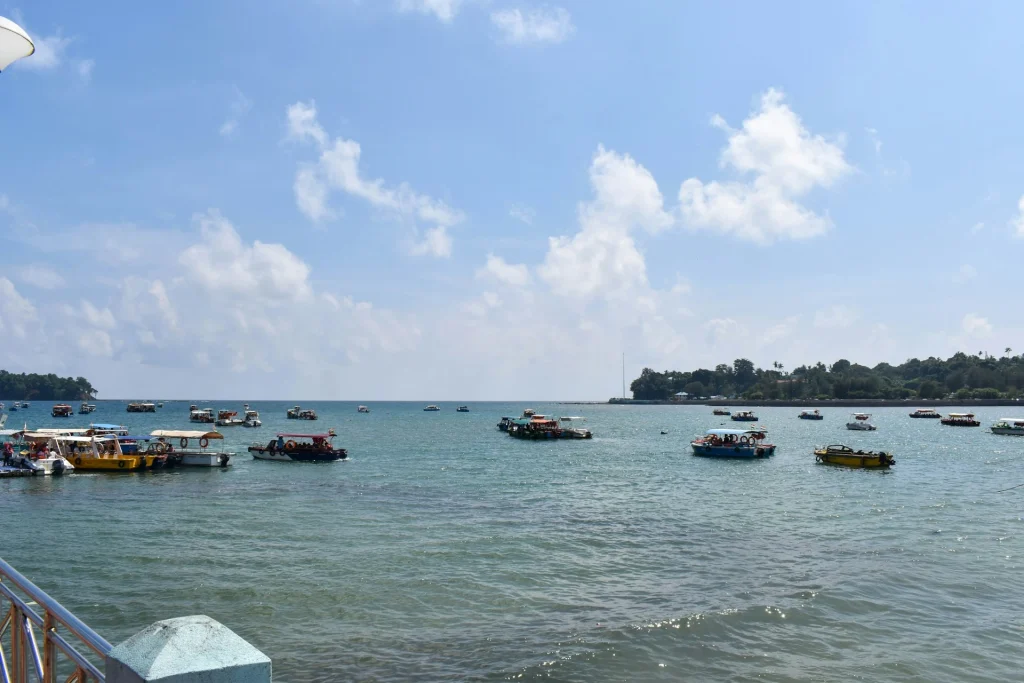
The Call of the Emerald Jungle: An Introduction When we think of the Andaman and Nicobar Islands, we often picture beautiful beaches. We imagine spending lazy days on Havelock’s white sands or snorkelling in Neil Island’s turquoise waters. But there is a world of adventure waiting to be discovered beyond the sun-kissed shores. This group of islands is really an underwater mountain range. The tops of the mountains make a rough, green landscape with dense tropical rainforests, high peaks, and hidden waterfalls. If you only go to the Andaman and Nicobar Islands’ coast, you’ll miss half the magic. There are many hidden treasures to find on Mount Harriet’s mossy trails and Saddle Peak’s hard climb. The road less travelled gives you amazing views and a deep sense of accomplishment that a deckchair can’t match. This guide is your chance to put on your boots and go into the wild. We will explore the different landscapes, find our way along the less-travelled trails, and give you the important tips you need for a safe and eco-friendly adventure in the Bay of Bengal. With The Tarzan Way’s immersive storytelling journeys, you can responsibly explore these jungles, making sure that your footprints leave behind memories instead of damage. Key Takeaways Different Landscapes: Explore a world beyond the beach, with rough mountains (Saddle Peak), one-of-a-kind sandbars (Ross and Smith), and thick biospheres (Mount Harriet). Top Treks: In-depth guides to the Elephant Beach jungle walk, the Mount Harriet (Manipur) National Park trek, and the well-known Saddle Peak climb. A Nicobar Reality Check: This is important information about permits and restrictions in the Nicobar district (Campbell Bay and Galathia) that will help you make sure your plans are legal and possible. Wildlife Watch: Find out about the different animals you might see, like the Nicobar Pigeon and the Robber Crab. Responsible Trekking: Why “tribal tourism” is limited and how to interact with the local culture in a way that is fair. Getting ready: Important gear lists and advice on how to deal with tropical humidity and leeches. 1. Why go trekking in the Andamans? Credit: Unsplash Trekking in the Andaman and Nicobar Islands is very different from trekking in the Himalayas or the Western Ghats. The altitude isn’t the hardest part; the weather is. The Atmosphere: It’s like going back in time. There are huge buttress-rooted trees, giant ferns, and thick canopies that block out the sun in the old forests. The humidity: The tropical climate makes things even harder. Because of the humidity, a short 5km hike can feel like 15km. Staying hydrated is very important. The Reward: Almost every hike ends with a breathtaking view of the ocean. Nothing beats coming out of a dark, green jungle and seeing the endless blue of the sea. Adding a hike or two to your trip to the Andaman and Nicobar Islands will turn it from a regular vacation into a real adventure. 2. Andaman Trek Trails: The Giants of the North and South Credit: Unsplash The Andaman Islands have the easiest and best-kept trails for tourists. Trek through Mount Harriet (Mount Manipur) National Park This park is in South Andaman, just a short ferry ride from Port Blair. It has a lot of history and is very beautiful. The Experience: The Mount Harriet National Park trek takes you through thick forests and rolling hills, making it a thrilling journey for people who like rough terrain. The 16-kilometre path from Mount Harriet to Madhuban is a birdwatcher’s dream come true. The View: The view from the top of the mountain takes your breath away. You can see all the islands around you. Did you know that the view from the top of Mount Harriet is the same as the one on the back of the Indian ₹20 bill? Moderate level of difficulty. Saddle Peak: The Top of the Islands Saddle Peak is the highest point in the archipelago, rising 732 meters above sea level. It is located in North Andaman near Diglipur. The Trail: This is a hard climb that starts in thick forests and goes up through different types of plants. The trees get shorter as you go higher because of the wind. The Reward: From the top, you can see the North Andaman coast and the deep ocean in a darker blue colour all around you. Hard/Strenuous (takes a whole day). The Ross and Smith Island Trek This is a one-of-a-kind land adventure in North Andaman, even though it’s not a vertical climb. The Trail: The Ross and Smith Island trek is a one-of-a-kind experience that takes travellers across a narrow, natural sandbar that connects two beautiful islands. The Vibe: The turquoise waters on both sides, the gentle sway of coconut palms, and the rhythmic lull of waves make for a sensory feast like no other. You are basically walking on the ocean. Level of difficulty: Easy (Walk). Havelock’s Elephant Beach Trek Elephant Beach is mostly reached by boat. The adventurer goes through the jungle. The Trail: A 2-kilometre hike through tall trees and a wetland. It can be muddy, but it’s always exciting. The reward is that you come out of the thick green jungle right onto the white sands. Level of difficulty: Easy to Moderate. 3. Adventures in Hiking in Nicobar: The Forbidden Frontier Credit: Unsplash Note: It’s very important to keep your EEAT (Expertise/Trustworthiness) high here. The Nicobar Islands are a Tribal Reserve and a Biosphere Reserve. Access is very tightly controlled. Most of the time, foreigners aren’t allowed, and Indians need special permits. Trek through Campbell Bay National Park This is as far away as it gets, on Great Nicobar, the southernmost island. The Experience: Visit Campbell Bay National Park to see the wide range of plants and animals that live there. The hike through the allowed areas lets you see a lot of different plants and animals. Wildlife: Keep an eye out for the Giant Robber Crab, the Crab-eating Macaque, and the beautiful Nicobar Pigeon. Moderate difficulty (but the
Explore Scuba Diving in the Andaman & Nicobar Islands
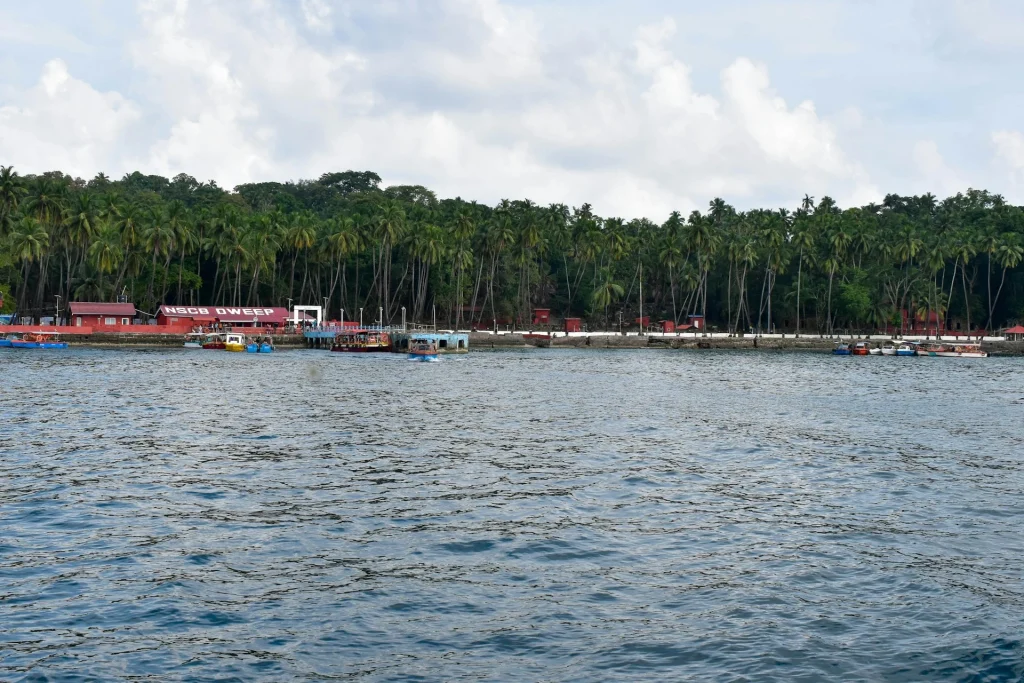
Introduction — The Last Underwater Frontier Floating in the Bay of Bengal, the Andaman and Nicobar Islands are a string of emerald gems set in a turquoise sea. While their pristine white-sand beaches are the stuff of legends, the true magic of this remote archipelago lies beneath the waves. This is, without question, one of the last great underwater frontiers, a paradise of crystal-clear waters, vibrant, untouched coral reefs, and a staggering diversity of marine life. For diving enthusiasts, this is a destination that truly lives up to the hype. This guide is designed to be your ultimate resource for exploring this underwater world. We will dive deep into everything you need to know, from your very first “Try Dive” to advanced expeditions, from the world-famous sites of Havelock Island to the secrets of Neil Island. We’ll explore the marine life you’ll meet and, most importantly, how to do it all safely and sustainably. With the immersive storytelling journeys brought to life by The Tarzan Way. Your dive trip can be a seamless adventure, connecting you responsibly with the profound beauty of the Andaman Sea. Key Takeaways World-Class Diving: The Andaman and Nicobar Islands offer year-round warm waters (28°C), incredible visibility (up to 40 meters), and some of the most vibrant, untouched coral reefs in South Asia. Best Time to Go: The prime diving season is from October to May, offering calm seas and the best visibility. Hubs for Diving: Havelock Island (Swaraj Dweep) is the main center with the most dive sites and operators. Neil Island (Shaheed Dweep) is a quieter, more relaxed alternative with fantastic macro life. Beginners Welcome: You don’t need to be a swimmer to dive. “Discover Scuba Dives” (DSD) with a 1-on-1 instructor are available for all beginners. Rich Biodiversity: The reefs are home to 500+ coral species, sea turtles, manta rays, reef sharks, and a kaleidoscope of fish. Plan Your Trip: A good Andaman and Nicobar Islands itinerary for diving should be at least 7-10 days to allow for diving, travel, and the mandatory “no-fly” period after diving. 1. Why is Andaman the Ultimate Diving Destination? Credit: Unsplash While there are many places to dive in the world, the Andamans hold a special allure. Because of their remote location, the coral reefs have been naturally protected from the over-development and pollution that have plagued other, more accessible destinations. The waters are part of a vast, protected marine ecosystem. This results in an underwater experience that is both vibrant and pristine. You can expect: Incredible Visibility: On a good day, visibility can exceed 40 meters (130 feet), making it feel like you are flying over the reef. Vibrant, Healthy Corals: The islands are a hotspot of coral diversity, with over 500 species, including rare table, staghorn, and brain corals, as well as stunning sea fans and anemones. Abundant Marine Life: The sheer density and variety of fish and other marine life are staggering. A Place for All: From shallow, sandy-bottomed sites perfect for beginners to deep, challenging pinnacles and currents for advanced divers, there is a dive site for every skill level. The combination of these factors makes it a top-tier destination for Andaman and Nicobar Islands travel, attracting divers from all over the globe. 2. A Beginner’s Paradise: Your First Dive (DSD) Credit: Unsplash If you’ve never dived before, the Andamans are arguably one of the best places in the world to fall in love with the sport. You don’t even need to know how to swim! The Discover Scuba Dive (DSD), or “Try Dive,” is designed for absolute beginners. Here’s what to expect: Briefing: A certified instructor will spend 20-30 minutes on land explaining the equipment, basic hand signals, and breathing techniques. Shallow Water Skills: You’ll enter shallow water (where you can stand up) and practice breathing underwater with your instructor. The Dive: Once you’re comfortable, your instructor will hold onto you and personally guide you on a 40-60 minute dive, typically to a maximum depth of 8-12 meters. You have a 1:1 ratio, ensuring you are 100% safe. Best Beginner Sites: Havelock Island: Tribe Gate, Red Pillar, and Nemo Reef are famous, sheltered sites perfect for DSDs. Neil Island: Bharatpur Beach has easy, shallow entry points. North Bay Island: A popular day trip from Port Blair for DSDs and other water sports. 3. The Heart of the Action: Havelock Island (Swaraj Dweep) Credit: Unsplash Havelock is the undisputed capital of diving in the Andamans. It has the highest concentration of dive shops (all PADI and SSI certified) and the widest variety of dive sites. This is an essential stop on any Andaman and Nicobar Islands trip for divers. Famous Dive Sites: Johnny’s Reef: A world-class site for intermediate to advanced divers. A large, flat reef known for its “fish soup” of colorful snappers, trevallies, and often whitetip reef sharks and rays. Dixon’s Pinnacle: A set of three large underwater rock pinnacles (seamounts) rising from the depths. This is a “cleaning station” that attracts giant moray eels, barracudas, and massive schools of fish. The Wall: A fantastic drift dive for certified divers. You are dropped at one end of a 50-meter-long underwater rock wall and simply “go with the flow,” drifting along the coral-covered face. Lighthouse: The most popular site for night dives. After dark, this reef comes alive with parrotfish sleeping in “cocoons,” as well as crabs, lobsters, and bioluminescent plankton. SS Inchkett (Wreck Dive): A 60-meter-long cargo ship sunk in the 1950s. It’s a fantastic, accessible wreck dive for certified divers. Quick Facts Location: 90-minute ferry from Port Blair Best For: All skill levels, dive courses, night dives Vibe: Bustling, with lots of cafes, resorts, and dive shops. Traveler’s Tip: Book your dives in advance during peak season (December-January) as the best shops fill up. 4. Neil Island (Shaheed Dweep): Serenity & Macro Life Credit: Unsplash If Havelock is a bustling city, Neil Island is a charming, quiet village. It’s significantly smaller, more relaxed, and offers a completely different diving
The Andaman & Nicobar Islands Railway Station: A Hidden Gem in the Indian Ocean
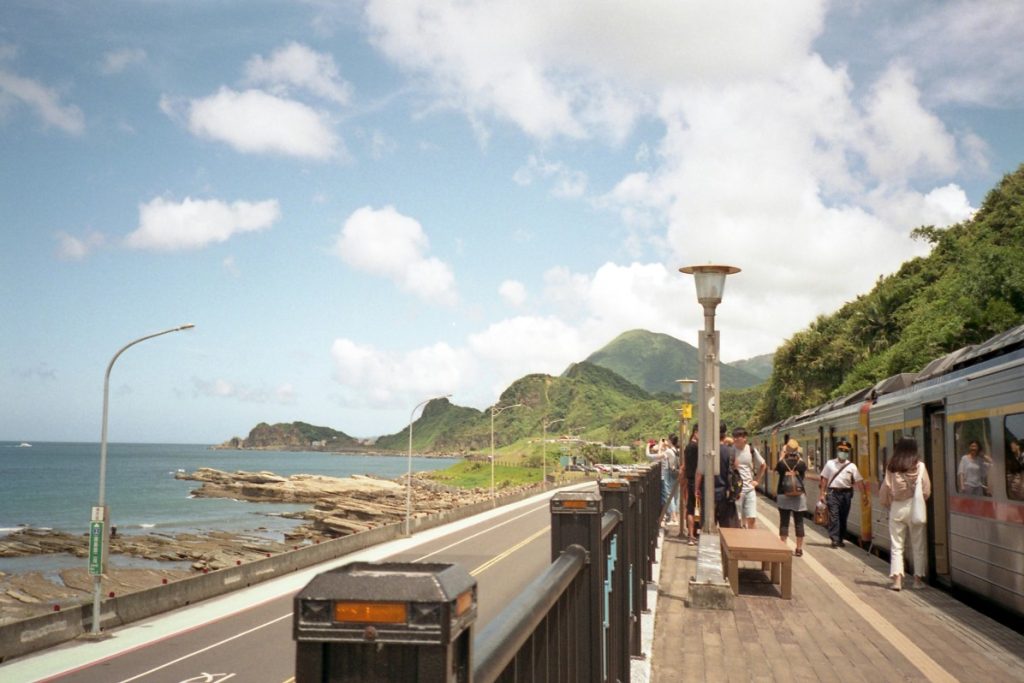
Introduction: Where Trains Meet the Sea When travelers think of the Andaman & Nicobar Islands, images of turquoise waters, swaying palm trees, and coral reefs come to mind. What few know is that there is a unique landmark that marries architecture, culture, and nature – the Andaman & Nicobar Islands Railway Station. Picture yourself standing on the platform of a railway station, where the rhythm of the trains dances to the melody of waves, coconut palms sway in the sun and the salty sea breeze drifts outside. This station is more than just the trains that pass through it – it provides a glimpse into the soul of the islands. For travelers arriving in the archipelago via Port Blair, many travelers find themselves extending their stay longer than planned, enamored by the island spirit and charm of the station. If you are looking for hidden gems on the islands and to experience the Andaman like a local, The Tarzan Way can tailor a bespoke itinerary that incorporates the railway station as part of the adventure itinerary along the beaches, diving trips and cultural experiences. Why the Andaman Railway Station is Special Eco-Friendly Infrastructure: Solar panels, rainwater harvesting, and sustainable materials preserve the environment. Architecture Blending with Nature: Thatched roofs, wooden beams, and artisan carvings reflect local culture. Scenic Views: Platforms overlook pristine beaches, coconut groves, and coral-rich waters. Cultural Hub: Friendly staff and occasional folk performances make the station lively. Photography Heaven: Ideal for travelers who want to capture the island’s beauty. Pro Tip: Combine a visit to the station with The Tarzan Way’s curated Andaman itineraries for a complete travel experience. Design and Architecture: A Harmony of Tradition and Sustainability The station is designed to honor the natural environment while showcasing Nicobari and Andamanese culture: Materials: Local timber, stone, and sustainable composites. Roofing: Thatch-inspired design to blend with the coastal environment. Energy: Integrated solar panels and rainwater harvesting. Landscaping: Native plants and flora surrounding the station. This makes it one of the unique stations in Andaman, demonstrating how infrastructure can harmonize with nature rather than disrupt it. Cultural Experiences at the Station One of the most enchanting aspects of this station is the human touch. Travelers can interact with locals, learn island stories, and enjoy spontaneous cultural moments: Folk music performances on shaded platforms Storytelling by station staff about Andamanese culture and history Local artisan displays showcasing traditional handicrafts Even if trains aren’t running, the station itself offers a cultural journey. This blog ensures travelers don’t miss these authentic experiences while exploring Andaman’s hidden gems. Scenic Beauty Around the Station The station isn’t just an architectural marvel—it’s surrounded by breathtaking scenery: White sandy beaches stretches into the horizon Coconut groves rustle in the sea breeze Turquoise waters and coral gardens perfect for diving and snorkeling Ideal sunset and sunrise spots for photography Many visitors combine their station visit with nearby beaches, taking in both natural beauty and local culture. Nearby Attractions and Activities Whether you’re a beach lover, a diver, or a cultural enthusiast, the station is a perfect starting point: 1. Beaches Short walks to secluded shores Relaxation and swimming Sunset views over the Indian Ocean 2. Coral Reefs and Diving Guided diving trips to Havelock and Neil Islands Snorkeling coral Andaman tours for beginners Glass-bottom boat rides for non-swimmers 3. Cultural Tours Local markets and handicraft villages Folk music and storytelling events Interaction with artisans 4. Eco-Tourism Learn about sustainable building and eco-friendly practices Observe how the station blends with the environment Responsible travel tips included in The Tarzan Way itineraries Pro Tip: Plan your station visit along with eco-tours and diving trips via The Tarzan Way, which ensures every activity respects local culture and nature. Travel Information Topic Details Location Near Port Blair, Andaman & Nicobar Islands Best Time to Visit October – May (dry season, calm seas) Entry Open for sightseeing, photography, and cultural experiences Transport Taxi, local bus, or combination of ferry and road for nearby islands Nearby Hotels Eco-lodges and resorts recommended in Andaman travel guides For more information about Andaman & Nicobar Islands you can checkout our Blogs: Are Andaman and Nicobar Coral Islands? How were Andaman and Nicobar Islands Formed? Andaman and Nicobar Islands: Tropical Paradise Reimagined. FAQs Q. What is the Andaman & Nicobar Islands Railway Station? It is a unique cultural and architectural landmark in the Andaman Islands, blending sustainable design with natural beauty. Q. Where is the Andaman & Nicobar station located? The station is situated near Port Blair, making it easily accessible for travelers before exploring Havelock, Neil, or other islands. Q. Is it operational for trains? While it resembles a railway station, it primarily functions as a cultural and tourist site rather than serving regular train operations. Q. What makes it eco-friendly? The station uses solar power, rainwater harvesting, native plants, and sustainable materials to minimize environmental impact. Q. Can visitors enter for sightseeing? Yes, visitors can explore the station, take photographs, enjoy cultural activities, and admire scenic ocean and beach views. Q. Are there nearby attractions? Nearby attractions include pristine beaches, coral reefs, local markets, cultural centers, and eco-tourism activities for travelers. Q. What cultural experiences are offered? Travelers can enjoy folk music, storytelling by locals, artisan displays, and insights into traditional Andamanese culture. Q. How do I reach the station? Visitors can reach the station via taxi, local bus, or a combination of ferry and road transport when coming from nearby islands. Q. When is the best time to visit? The ideal time to visit is October through May, during the dry season, for calm seas, clear skies, and perfect sightseeing. Q. Can beginners enjoy diving and snorkeling? Yes, beginners can safely enjoy snorkeling, guided diving tours, and glass-bottom boat rides to explore the vibrant reefs. Why Visit the Andaman & Nicobar Islands Railway Station? Experience Andaman architecture blending with nature Enjoy eco-conscious design while exploring tropical beauty Interact with locals and learn island culture Visit nearby beaches, coral reefs, and markets
How were Andaman and Nicobar Islands Formed?
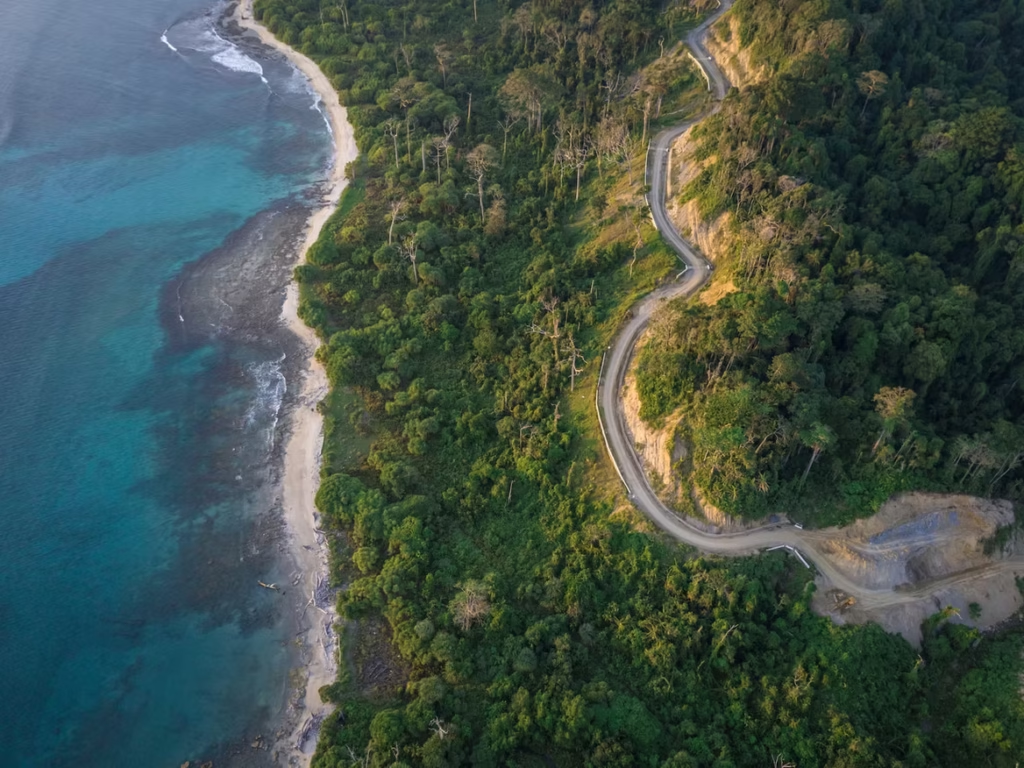
Today, when we think of the Andaman and Nicobar Islands, we think of turquoise waters, green forests, and all kinds of marine life. But the tropical paradise that exists today has a fascinating geological history that goes back millions of years. The Andaman Islands formation is a tectonic, volcanic, and landscape changing story, that is still happening today. In this article, we will explore the geological history of Andaman, the geological processes of tectonics and volcanism, and how they formed the exceptionally beautiful archipelago of islands that we know today. Are you looking to explore the Andaman and Nicobar Islands and create your own unique experience? Try The Tarzan Way, a unique AI-generated personalized trip planner generating unique Andaman travel experiences just for you. What’s in this Blog Geological History of Andaman Islands Plate Tectonics and the Subduction Zone Volcanic Activity in the Andaman Islands Separation from Indonesian Landmasses & Age of the Islands Erosion, Sea Level Changes & Coral Growth Impact on Biodiversity and Human Presence FAQs Final Thoughts Geological History of Andaman Islands The geological history of Andaman stretches over 88 million years ago, back when Earth’s continents came together and drifted apart in various configurations. The Andaman Nicobar geology shows that the islands were slowly exposed above sea level as a result of massive tectonic forces. Erosion, volcanism, and changing sea levels shaped the original landscape of the Andaman Nicobar area and created all that we see today as part of the Andaman Nicobar archipelago history. Check out our blog on Andaman and Nicobar Islands: Tropical Paradise Reimagined to see how these geological formations meet modern attractions. Plate Tectonics and the Subduction Zone It is impossible to fully explain how the Andaman Islands were formed without plate tectonics. The islands sit on a plate boundary where the Indian Plate is subducting beneath the Burmese Plate. This Andaman Nicobar subduction zone is very active and generates earthquakes and complex seafloor features. This immense pressure folded and lifted portions of the ocean crust, resulting in the chain of islands. The continuing plate tectonics in Andaman indicates the region is still geologically active. Volcanic Activity in the Andaman Islands Another important piece of the puzzle is volcanic activity in Andaman Islands. Barren Island, the only active volcano in India, is located here, and past eruptions have added new layers of rock and altered portions of the island group. Volcanic evidence has not only contributed to the Andaman Islands origin theory but continues to demonstrate the raw, creative power of geology. Adventure seekers can explore these landscapes alongside coral reefs — read more in our blog Andaman and Nicobar Islands: Diving into Underwater Wonders. Separation from Indonesian Landmasses & Age of the Islands Around 26 million years ago, fractures in the Earth’s crust first distinguished the Andaman Islands by breaking off from the Indonesian archipelago. This physical break allowed them room for unique ecological and cultural evolution. Thus, the Andaman Nicobar archipelago history represents millions of years of independent existence — a living museum of natural history. Erosion, Sea Level Changes & Coral Growth In addition to tectonics and volcanism, natural sculpting forces contributed. Erosion carved valleys, shifting seas submerged and revealed land, and corals colonized the coasts. Together, these forces have finely tuned the Andaman Islands formation, creating a nuanced interplay of steep cliffs, sandy beaches, and rich underwater habitats. Want to know if they are coral islands? Read our detailed blog: Are Andaman and Nicobar Coral Islands? Impact on Biodiversity and Human Presence The geological history of Andaman produced not only land but also biodiversity — from dense tropical forests to colorful reefs. Geological processes made the archipelago a rare hotspot of biodiversity. People arrived much later, bringing diverse cultures that added new chapters to the Andaman Nicobar archipelago history. Colonial exploration and waves of migration further shaped the human story here. If you’re planning to explore this mix of nature and heritage, don’t miss our Ultimate Travel Guide to Andaman. FAQs Q. How old are the Andaman Islands? The Andaman Islands’ age is estimated at around 88 million years, shaped by tectonic activity and volcanic forces. Q. What geological processes led to their formation? The Andaman Islands formation is the result of plate tectonics, volcanic activity, and erosion over millions of years. Q. Are the Andaman & Nicobar Islands volcanic? Yes – Barren Island shows active volcanic activity in the Andaman Islands, while many other islands have dormant or tectonic origins. Q. What plates are involved in Andaman tectonics? The Indian Plate and Burmese Plate interact at the Andaman Nicobar subduction zone, driving earthquakes and uplift. Q. When did the islands separate from Indonesia? About 26 million years ago, fractures split them from the Indonesian archipelago, shaping the unique Andaman Nicobar geology. Q. What role does the subduction zone play? The Andaman Nicobar subduction zone causes seismic activity and continues to shape the region’s geology through uplift and deformation. Q. Do volcanic activities still occur? Yes – Barren Island remains active, showing ongoing volcanic activity in Andaman Islands. Q. Are there different origin theories? The main Andaman Islands origin theory is tectonic uplift, but coral growth and erosion also played significant roles. Q. How do erosion and coral reefs affect the islands? Erosion and coral reefs refined coastlines, enriched marine biodiversity, and contributed to the long-term Andaman Nicobar archipelago history. Final Thoughts The Andaman’s geological history tells the grand story of Earth — continents moving, volcanoes erupting, oceans rising and falling, creating the beauty we see today. From plate tectonics and the Andaman Nicobar subduction zone to the living evidence of volcanic activity in the Andaman Islands, the archipelago embodies nature’s enduring creativity. Want to go further than science? Let The Tarzan Way, our AI-managed adventure generator, plot your Andaman experience including history, culture and natural beauty.
Andaman and Nicobar Islands – Do you need a passport?
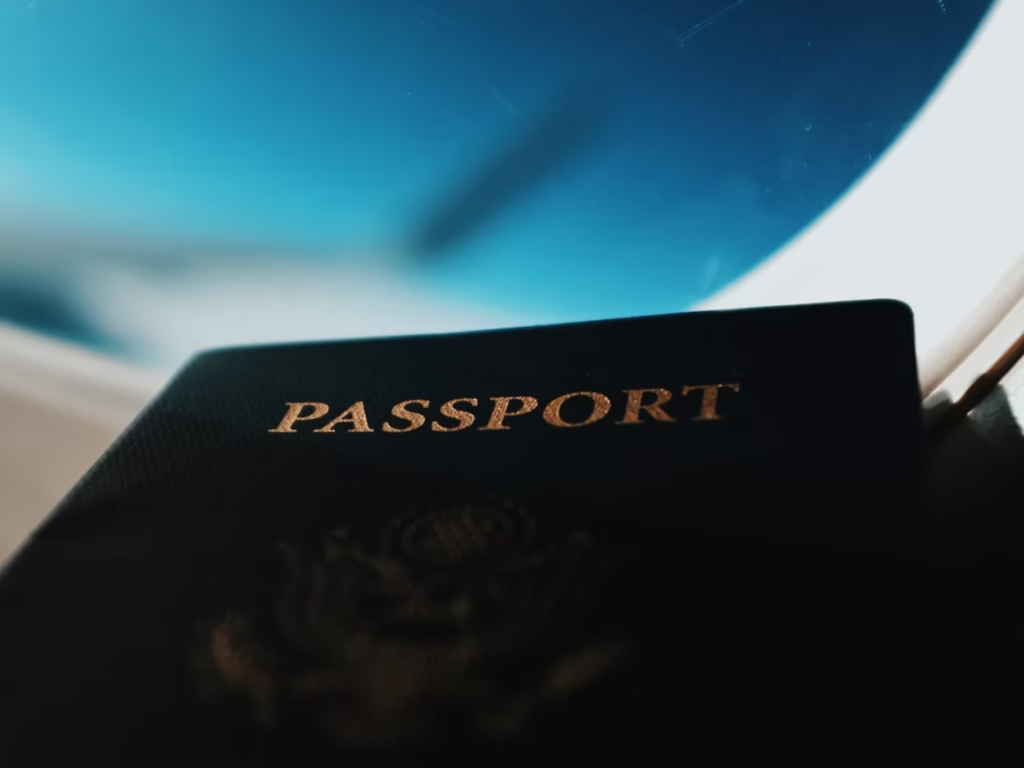
Navigating the Andaman and Nicobar Islands’ shores invites visitors to explore a region of stunning beauty and distinct charm. However, the topic of whether a passport is required to set foot on these heavenly shores frequently arises in the minds of travellers. For visitors from within India, the Andaman and Nicobar Islands give a cordial welcome that does not require a passport. As Indian union territories, these islands welcome Indian people with open arms, allowing them to enjoy their pristine beaches, lush landscapes, and teeming marine life without the requirement for an international travel document. Photo by Blake Guidry on Unsplash If one’s journey to these islands begins on foreign soil, the story takes a different path. For overseas travellers, the familiar companionship of a passport, coupled by the necessary visa arrangements, becomes a requirement. The Andaman and Nicobar Islands have their own distinct charm, but they also follow worldwide travel paperwork standards. Because the islands are an important part of India, domestic travellers can visit this haven without being hindered by passport requirements. Those embarking on a global voyage to these tropical havens, on the other hand, see the passport as the key to unlocking the treasure trove of their beauty. The Andaman and Nicobar Islands stand as a tribute to the range of human experiences in the delicate dance between travel prohibitions and the appeal of exploration. They welcome Indians with open arms and extend an invitation to international travellers armed with passports to learn their enthralling mysteries.
Andaman & Nicobar Islands
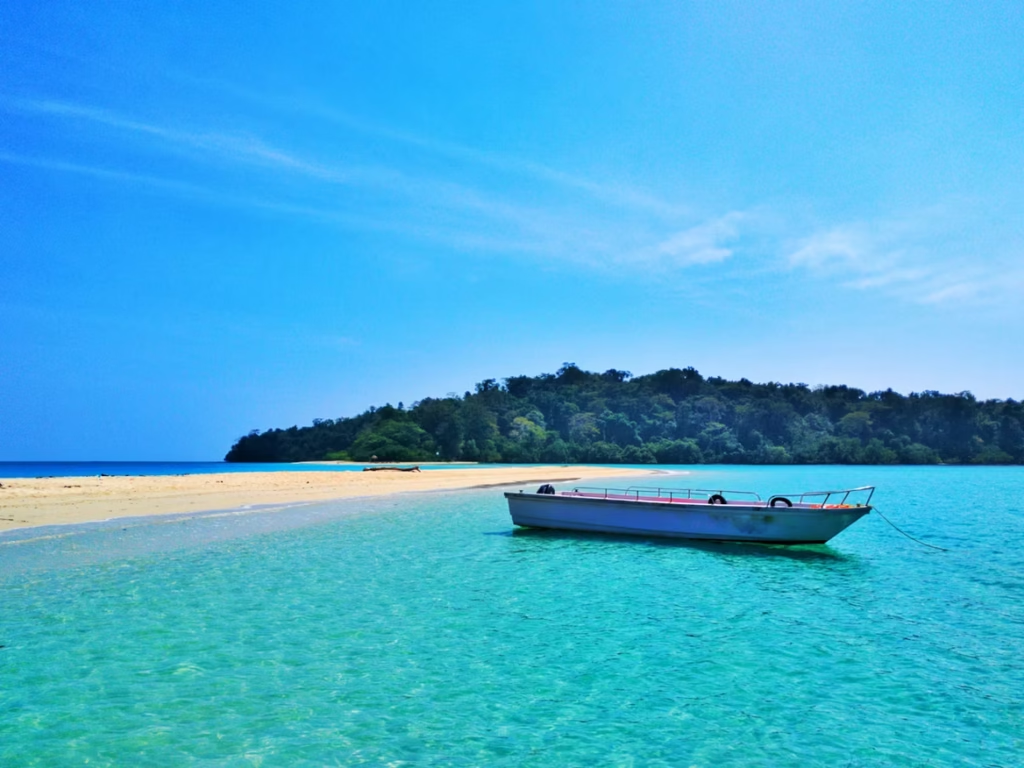
An Idyllic Paradise in the Bay of Bengal About History Population and people Climate Top 3 places to visit About The Andaman and Nicobar islands are one of the 8 union territories of India and are located in the Bay of Bengal, located between latitudes 6°N and 14°N and longitudes 92°E and 94°E. One can find white sand, pristine beaches lined with palm trees all over the islands. They give an opportunity for the perfect getaway to an abundance of quiet, tranquillity, and turquoise water. Andaman is a living example of what you mean when you refer to a “Tropical Paradise.” History The English East India Company’s fleet reached the Andaman Islands in 1789, and the British connected them administratively to the Nicobar Islands in 1872. The Andaman Islands are located on the historic trade route between India and Myanmar. In 1956, the two groups of islands were admitted as a union territory of the Indian Republic. The region has been known for its indigenous communities, which have steadfastly avoided considerable engagement with ethnic outsiders, for more than a century. The islands gained international prominence in 2004 after a sizable tsunami that had been caused by an earthquake in the Indian Ocean close to Indonesia badly destroyed them. 8,249 square km or 3,185 square miles. Population and People Photo by bionic__exe on Unsplash South Asian immigrants and their offspring make up the great bulk of the Andamans’ population. The majority of people speak Hindi or Bengali, but Tamil, Telugu, and Malayalam are also widely used. In the past, the Andamanese were small, isolated communities. Single outrigger canoes were used to harpoon or net turtles, dugongs, and fish. Major cultural change wasn’t possible until the middle of the 20th century due to the isolation of the Andamanese and their overall antagonism toward Westerners. Few native Andamanese remain alive today; the majority of these populations were wiped out by disease as a result of their contact with Europeans, Indians, and other foreigners. Early in the twenty-first century, the majority of the Nicobar Islands’ population was still made up of its native Nicobarese people (including the related Shompen). Both the Mon (also known as the Talaing) of Myanmar and the Malays of insular and peninsular Southeast Asia are likely their direct ancestors. The Austroasiatic language family includes the Mon-Khmer language group, which includes the Nicobarese languages. Some Nicobarese also speak Hindi and English. The Nicobar Islands are home to a sizable Tamil community in addition to its native inhabitants and other residents from the Indian mainland. As part of the Indian government’s initiative to advance the region’s agriculture, many arrived during the 1960s and 1970s. The people of the Andaman and Nicobar Islands are friendly and proud of their rich cultural history. Their welcoming atmosphere and open spirit provide visitors to the islands a sense of belonging. Festivals and events highlight the variety of their cultures while also encouraging unity among the diverse ethnic populations. The islanders have a deep connection to nature, living in harmony with the beautiful surroundings and enthusiastically sharing their knowledge of the indigenous flora and animals. Their fortitude in the face of adversity, especially natural calamities, is inspiring, and they continue to prosper with a strong sense of community. Interacting with the inhabitants exposes their true warmth and openness, leaving lasting recollections of the island’s allure. The inhabitants of the Andaman and Nicobar Islands are an essential part of the enthralling experience, making your trip genuinely enriching. Take advantage of the opportunity to engage with these friendly hosts and learn about the distinct character that defines this tropical sanctuary. Climate The best thing about these islands is that they are a year-round vacation spot with little variation in temperature and constant comfort. Between October and May is regarded as the ideal season to visit the Andaman and Nicobar Islands. A tropical paradise with a year-round warm and humid environment, the weather is sunny and comfortable, ideal for beach activities, snorkelling, and discovering beautiful coral reefs. The turquoise sea and moderate breeze provide an excellent environment for water sports and underwater experiences. During the monsoon season, which lasts from May to October, rain showers renew the lush green forests, creating a peaceful haven for nature enthusiasts but it is not a good time to visit because of the high tides, persistent rain, and strong winds. Regardless of the weather, immerse yourself in the islands’ rich cultural heritage by attending local events and traditional performances. Whether you prefer sun-kissed beaches or lush rainforests, the Andaman & Nicobar Islands provide a memorable and diverse experience, attracting travellers with their spectacular beauty and kind welcome. Because Andaman is a tropical island, it never experiences winter. Tourists can simply relax and take in the expansive view of the ocean in this comfortable, moderately humid climate that gives a good sea breeze. In the summer, the white dunes contrast with the clear blue sky and turquoise sea, which reflect blue tones. This makes for a beautiful vacation spot, not just for honeymooning couples but also for families with older members. It’s the ideal location to get a drink and relax on the shacks because it’s not too hot or humid. Andaman and Nicobar Airports How were Andaman and Nicobar Islands formed? Are Andaman and Nicobar Coral Islands? The Andaman and Nicobar Railways Do you need a passport to travel to Andaman and Nicobar Islands? Top 3 places to visit for your next trip to Andaman and Nicobar Islands Port Blair Photo by Sahil on Unsplash The Andaman and Nicobar Islands’ capital is Port Blair. Additionally, it serves as the sole notified town in the region as well as the administrative centre for the South Andaman district and the local administrative subdivision (tehsil) of the islands. The entry point is Port Blair, which has both air and marine connections to the rest of India. INS Jarawa, a
Andaman and Nicobar – Airports
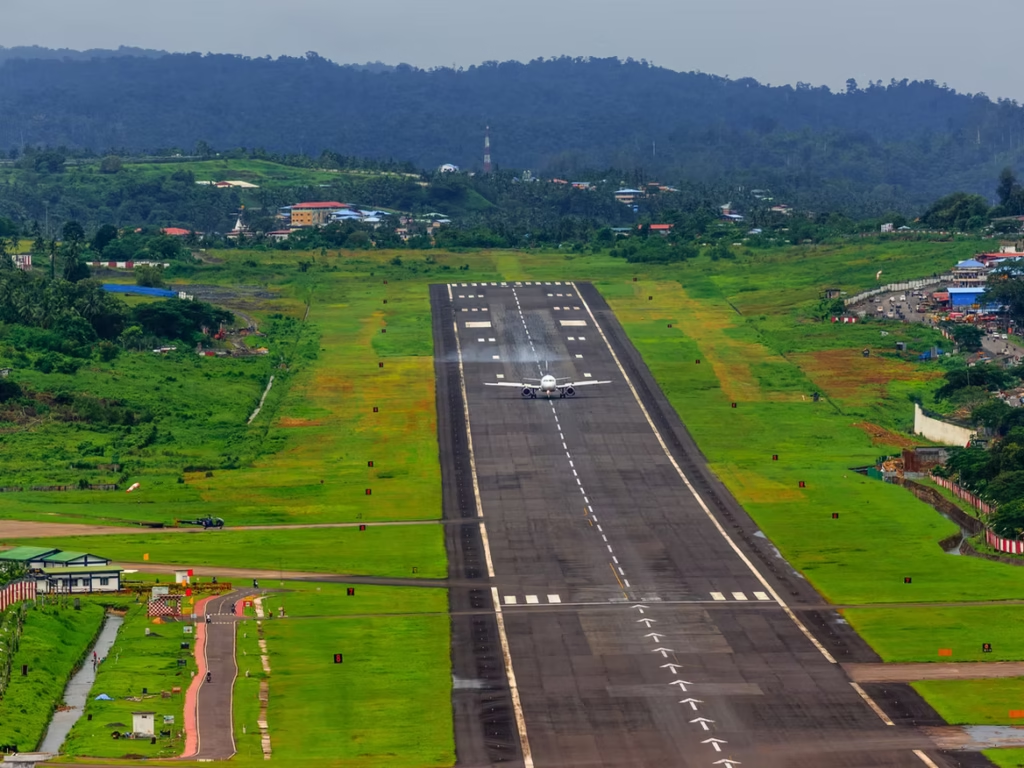
Here are a list of airports established in Andaman and Nicobar Islands. LOCATION NAME CATEGORY Port Blair Veer Savarkar International Airport International Airport Campbell Bay INS Baaz Military Car Nicobar Car Nicobar Air Force Base Military Diglipur INS Kohassa Military Photo by Lenstravelier on Unsplash Veer Savarkar International Airport The capital of the union territory of India’s Andaman and Nicobar Islands, Port Blair, is home to Veer Savarkar International Airport. The airport acts as a key hub for domestic and select international flights that connect the islands to other regions of India and surrounding nations. Due to its strategic location in the Bay of Bengal, it serves as a vital entry point for people and goods entering and exiting the region. The harmonious integration of modernization and cultural history is seen at Veer Savarkar International Airport. The airport, which bears the name of the visionary independence fighter Vinayak Damodar Savarkar, acts as a portal not just to a specific location but also to a deeply ingrained sense of history and patriotism. It’s more than simply a transit hub; it’s a location where tales of bravery and selflessness rub shoulders with the buzz of excited travelers. As you enter the airport, the architecture hints at a storied past. The architectural components work together to provide a classic feeling while accommodating modern tourist needs. The artful blending of traditional and modern elements in the airport’s design results in a space that is both warm and motivating. The Veer Savarkar International Airport is quite proud of its commitment to technical development. Modern infrastructure guarantees an effective travel experience, meeting the changing expectations of the contemporary traveler. The airport meets the needs of the digital age while still honoring its historical identity, offering seamless check-ins and cutting-edge security features. A smart selection of exhibitions and displays honor the man for whom the airport is named in addition to its utilitarian purposes. A trip to the airport provides an opportunity to learn about Veer Savarkar’s life and contributions, to feel a connection to the past, and to be motivated by his tenacious fight for justice and independence. Photo by Sathis Khanna on Unsplash INS Baaz INS Baaz Airport stands out as a protector of safety and the environment. Its strategic placement was carefully planned and ensures the country’s sovereignty at a key maritime intersection. The runway, which flows into the Bay of Bengal without interruption, represents the union of technological advancement with the vastness of nature. However, INS Baaz Airport is more than merely functional—it captures the spirit of the islands. The design appears to be an organic extension of the environment itself, and the breeze that rustles through its terminals brings echoes of the sea’s legacy. The employees here are more than just workers; they are watchmen for the security of the country. Their commitment to a cause bigger than themselves is echoed by the relentless waves touching the coastline. However, INS Baaz Airport offers a glimpse into island life in addition to serving a strategic purpose. Beyond safety, it gives visitors a glimpse of the islands’ unspoiled beauty, with lush surroundings and undeveloped beaches making a lasting impression on everyone who visits. The INS Baaz Airport is a guardian that is perfectly incorporated into the embrace of the islands, representing harmony between security and tranquillity. It ties together history, tactic, and the enduring fascination of the Andaman and Nicobar Islands with each departure and arrival. Car Nicobar Air Force Base The Car Nicobar Air Force Base Airport, located in the turquoise expanse of the Andaman Sea, is a combination of both strategic significance and natural grandeur. This airfield is more than simply a concrete runway; it represents the Andaman and Nicobar Islands’ ideal balance of security and peace. The Car Nicobar Air Force Base Airport’s position is not by chance; it is a thorough study of defense and proximity. Strategically positioned, it protects the nation’s interests in a critical region. The runway appears to extend indefinitely into the water, a symbol of the harmony between human ingenuity and the vastness of nature. However, this airport is more than just a military post; it embodies the essence of the islands. The lovely sea air that rustles through its hallways hints about the islands’ seafaring past. The building reflects this link, blending in with the surroundings. The servicemen stationed at Car Nicobar Air Force Base Airport are professional national security protectors. Their dedication echoes the waves that caress the island coastlines incessantly, a reflection of their dedication to a cause larger than themselves. In addition to its strategic importance, the airport provides passengers with a unique look into the allure of the islands. It also acts as a gateway to the pristine beauty of the Andaman and Nicobar Islands. The islands’ pristine beaches and verdant surroundings create an indelible impression on those who visit, attesting to their ageless appeal. With each landing and takeoff, history, strategy, and the compelling appeal of the Andaman & Nicobar Islands are intertwined.



